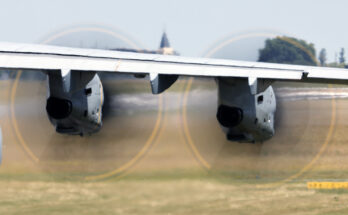
Frozen out from other markets, Pakistan is taking another look at the Chinese-made Z-10 attack helicopter. An agreement between the two countries on the supply of the helicopters would deepen the defense ties between Beijing and Islamabad and serve to underscore the ability of Pakistan to benefit from advancements in the Chinese defense market.
Pakistani procurement of new attack helicopters to replace its aging AH-1F Cobras has been frustrated by poor political relations between Islamabad and Washington. In 2015, Pakistan purchased a dozen AH-1Zs from the United States. This agreement was followed three years later by a deal with Turkey for 30 T-129 attack helicopters. Neither deal, however, is currently being implemented. The Trump administration froze hundreds of millions of dollars in security assistance to Pakistan in January 2018, aiming to pressure Islamabad into action against the Afghan Taliban. As Pakistan intended to use that funding to help finance the AH-1Z agreement, the deal was effectively canceled. The helicopters themselves have been produced, but were put in storage, with their Pakistani markings covered.
The T-129 agreement, meanwhile, has become a casualty of the deteriorating relationship between Washington and Ankara, in addition to the state of relations between the U.S. and Pakistan. The Pakistani Army purchased 30 T-129s at a cost of about $1.5 billion in 2018. The T-129, which is based on the Agusta A-129, utilizes a pair of LHTEC T800-4A engines, produced by a joint venture between British firm Rolls-Royce and U.S. firm Honeywell. This gives the U.S. a veto over whether the engines may be re-exported to other customers, such as Pakistan. Within months of the news that the contract between Turkey and Pakistan had been completed, Turkish officials were warning that the deal could hit a roadblock over the need for U.S. approval. The sale has been in limbo ever since, though Turkey has explored the possibility of a work-around by installing alternative engines, either sourced from Europe or produced locally.
There has not been any movement on either of the sales despite a change in diplomatic approach from the Trump administration, which gyrated from wanting to pressure Pakistan over Afghanistan to, more recently, hoping to enlist Pakistani support for U.S.-Taliban peace talks. When Prime Minister Imran Khan visited the U.S. last year, President Donald Trump dangled the possibility of restoring security aid. But to date, the U.S. has not done so, and moreover appears to still be withholding approval of an export license for the T-129 engines, effectively translating to a block on both attack helicopter agreements. While the U.S. Congress has challenged some of President Trump’s policy moves with respect to U.S. allies and partners, the Congress has for some time soured on Pakistan, as evidenced by a 2016 vote that stripped Islamabad of the ability to utilize security assistance to procure F-16 fighter jets. There is thus little pressure on the Trump administration to repair ties with Pakistan, outside of that arising from his objective of making an exit from Afghanistan.
Shut out from the U.S. market – and with trouble accessing the Turkish market, at least as far as helicopters are concerned – Pakistan may start looking elsewhere. Reporting from the International Military Helicopter conference in London, FlightGlobal quoted Pakistani Army Aviation commander Maj. Gen. Syed Najeeb Ahmed as saying, “We are looking at other options. One of them is in China in the shape of the new attack helicopter they have created called the Z-10ME. In case the first two options do not materialize, this third option will be considered.” The media outlet noted that the major general was pessimistic on the potential for the AH-1Z deal to be revived. As for the T-129 agreement, it may be salvaged if Turkey is able to offer a replacement engine, but Pakistan has set a deadline of July 2020 for a final decision on a new attack helicopter, which may not give Turkish Aerospace Industries enough time to field a replacement, particularly if it is to rely on a locally made option.
That deadline seems somewhat at odds with a timeline specified by the head of Turkey’s military procurement agency SSB, İsmail Demir, who said in January, “Pakistan has agreed to give us another year [to resolve the problem]. We hope we will be able to develop our indigenous engine soon to power the T129. After one year, Pakistan may be satisfied with the level of progress in our engine program, or the U.S. may grant us the export license.” Flight Global noted that there is a sense of urgency on the side of Pakistani Army Aviation, which wants to ensure parity between the attack helicopters fielded in Pakistan and those entering service in rival India. He stated, “The Cobras are no match for the Apaches that the Indians are getting. We definitely want to match that [capability].”
While the Z-10ME would appear to be the favored candidate, Major General Ahmed’s reference to “other options” would suggest that Pakistani Army Aviation is also looking beyond the Z-10. He did not specify which other options might be under consideration, but Pakistan has in recent years imported a small number of Russian-made Mi-35M attack helicopters. One of Russia’s top arms customers is India, making Moscow wary of losing a major client in the pursuit of smaller deals with its rival, but the increasing foreign competition in India, coming as it does at the same time that the U.S. has started mostly shunning the Pakistani market, makes Pakistan an ideal candidate for Russia to pursue arms contracts with. Other suppliers in Europe may also be eager to land export sales in the event that Pakistan does reopen its search for attack helicopters.
After a meeting with Pakistani Prime Minister Khan at Davos earlier this year, U.S. President Trump declared, “We’re getting along very well. I would say we’ve never been closer with Pakistan than we are right now.” On the subject of attack helicopters specifically or the arms trade generally, however, ties between the two countries couldn’t be further apart. Developing ties with India appears to be higher on the Trump administration’s priority list. “I believe the United States should be India’s premier defense partner, and that’s the way it’s working out,” President Trump said this month while visiting India. This is not lost on Pakistan, which also recognizes that, as the U.S. winds down its presence in Afghanistan, Washington may yet grow even less concerned about maintaining a positive relationship with Pakistan. The close China-Pakistan partnership stands to benefit.
Military markets analyst, covering Eurasia, Middle East, and Africa.




